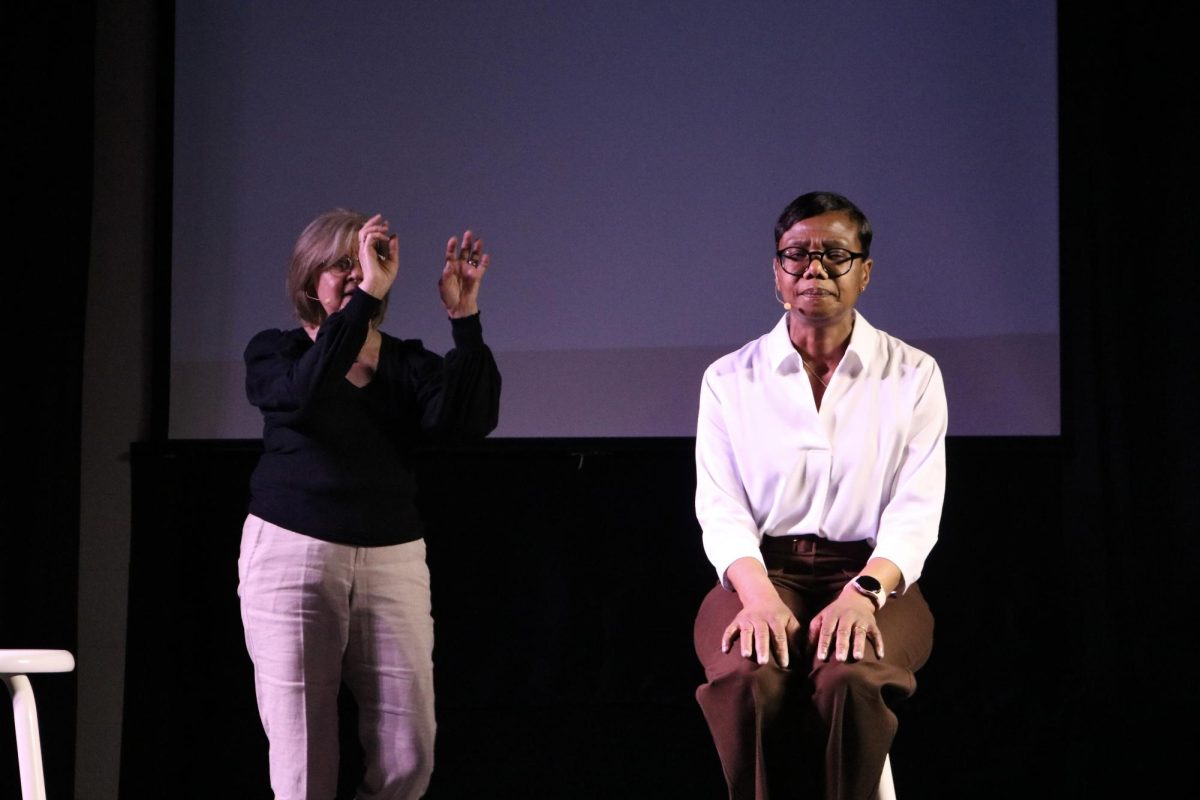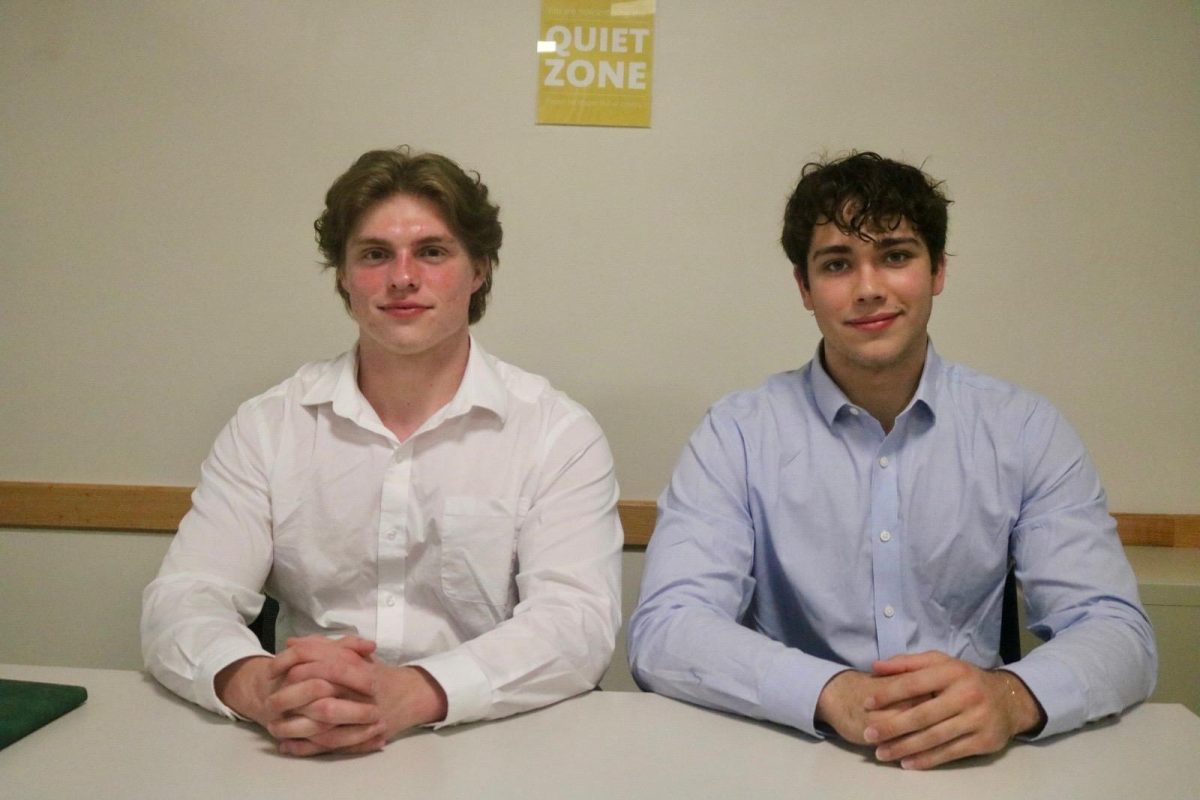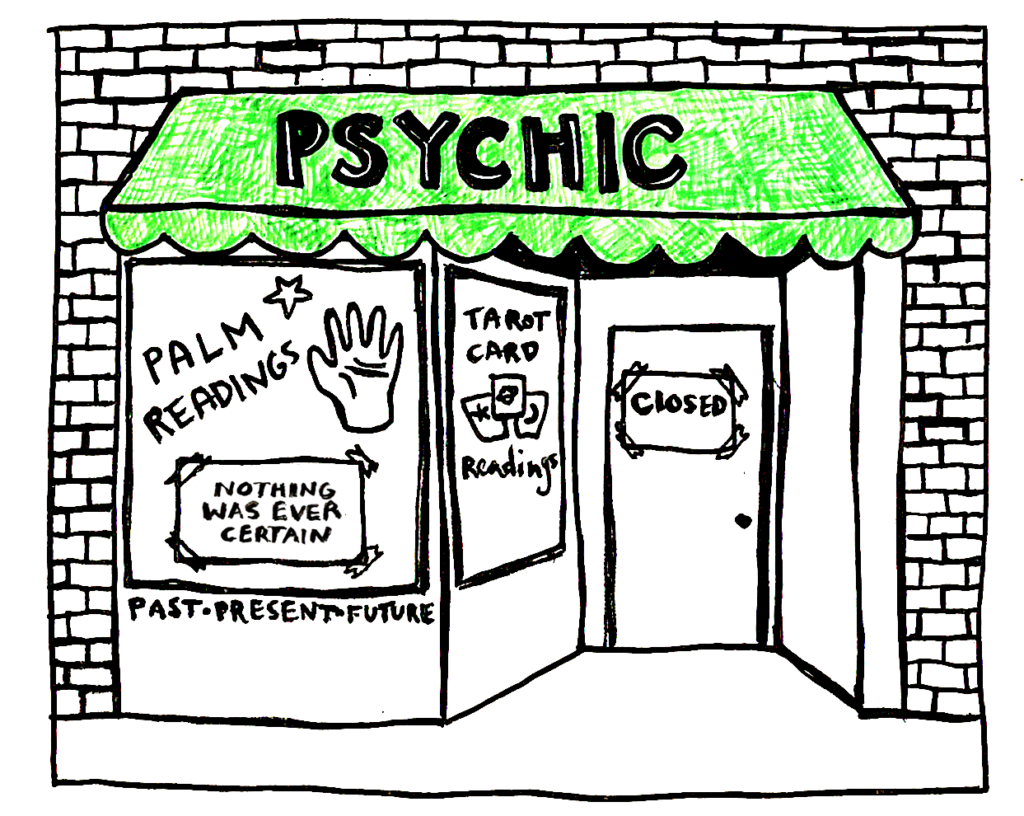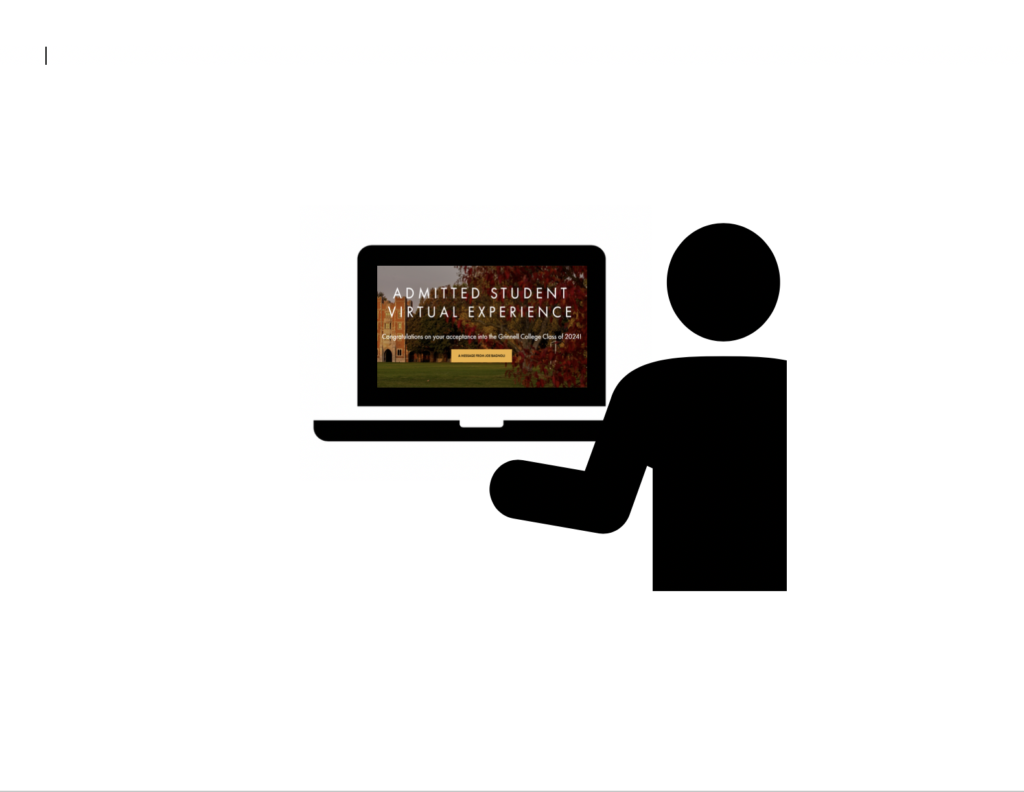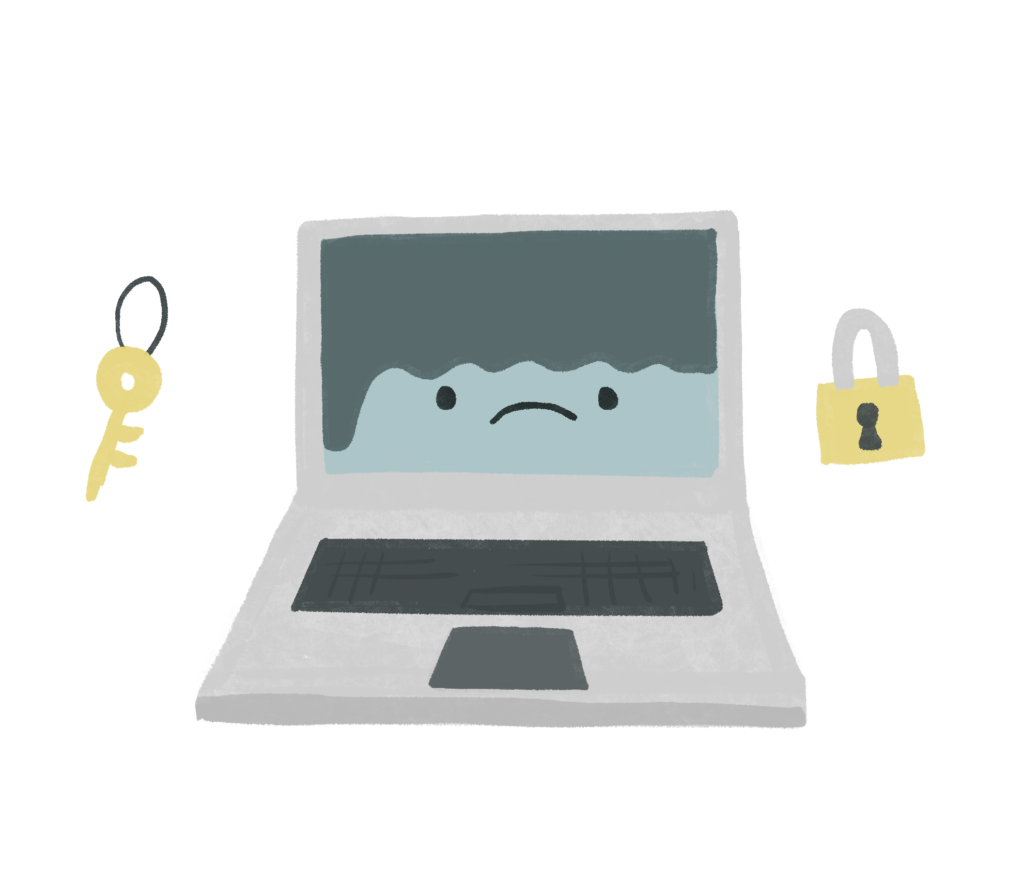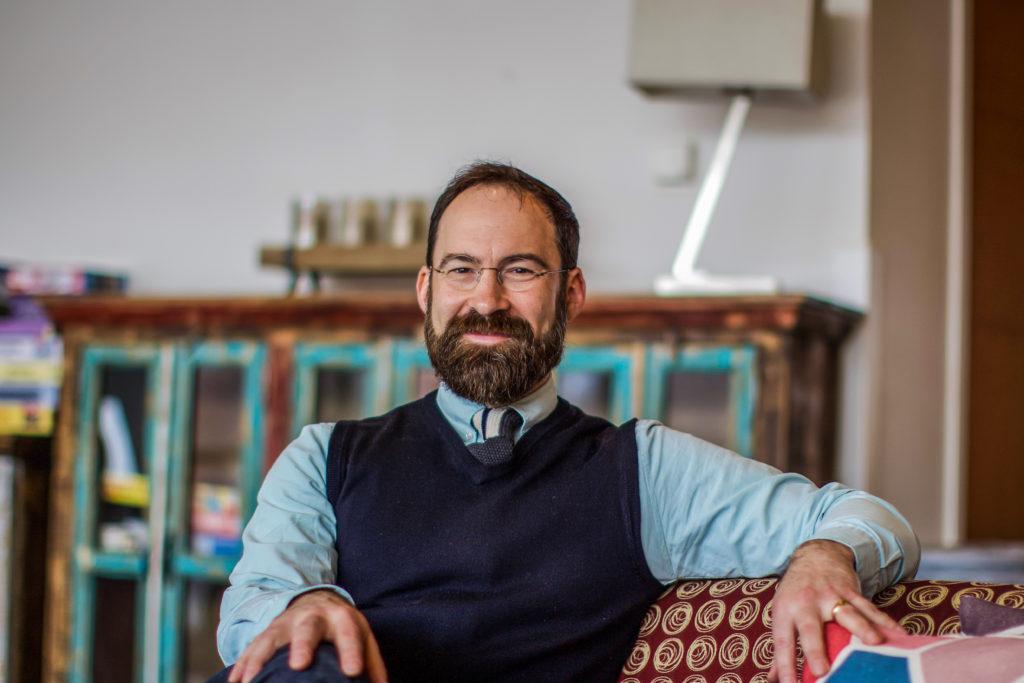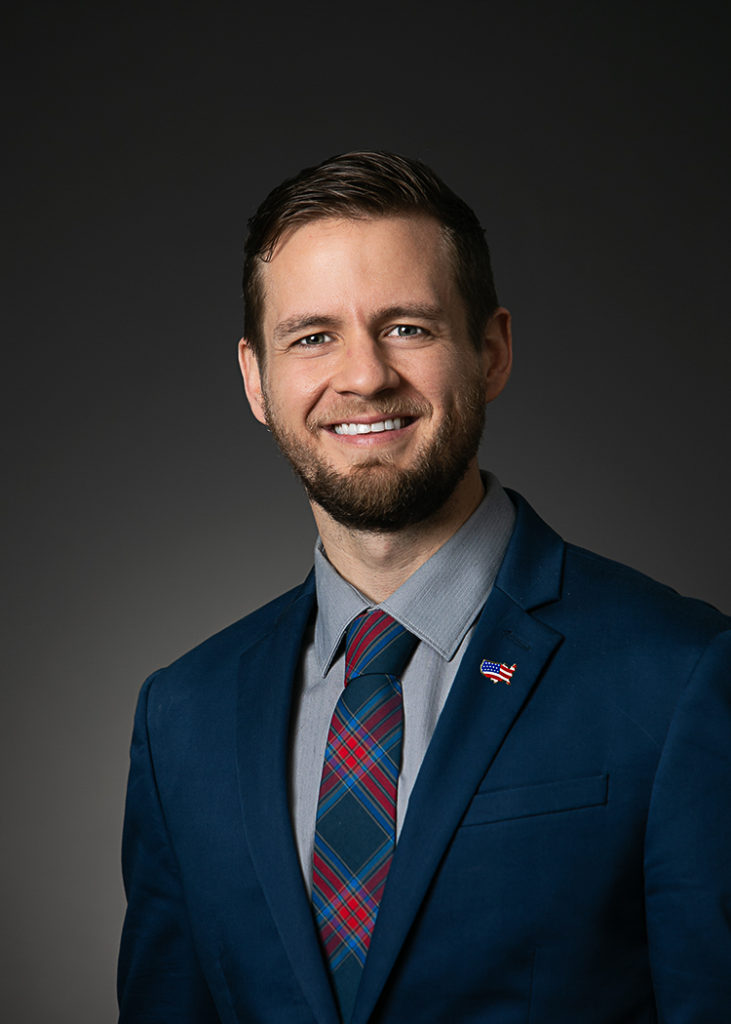At one point during her convocation lecture “Public Scholarship, Personal Scholarship: The Work of Memory in Poland Today,” Erica Lehrer ’92 analyzed two different maps that were both entitled, “Jewish Heritage in Poland.” One of the maps was from the Polish national tourist bureau and listed houses of prayer, synagogues, cemeteries, World War II ghettos and Nazi death camps. The other map was from Israel and only listed Nazi death camps and World War II ghettos. The difference between these maps, Lehrer explained, “gives a sense of the constrained way that popular imagination answers the question of what is worth inheriting—what is Jewish heritage in Poland?”
Professor Brigittine French, Anthropology, introduced Lehrer to a crowd of 60 in JRC 101 at noon on Wednesday.
“I first came to know Dr. Lehrer not as a Grinnellian but as a leading scholar on violence in public memory,” French said. “Folks talked about her work as empirically careful, theoretically bold and ethically situated.”
Lehrer’s talk focused on her research in Kazimierz, a historically Jewish quarter in Krakow, Poland. In 1941, the Nazis forced the Jews living in Kazimierz into a ghetto. In the post-war period, Kazimierz once again became a hub of Jewish life, but during the communist period, it fell into disrepair and, according to Lehrer, “took on the character of a city slum.” In her recently published book “Jewish Poland Revisited: Heritage Tourism in Unquiet Places,” Lehrer focuses on the changes undergone in the quarter since the 1990s.
“I happened upon Krakow’s historic Jewish quarter and was confronted with ruins of an entire Jewish world,” Lehrer said. “But more surprising was that there was something other than ruins. I was there for the city’s second annual Jewish festival.
And I asked, why was there a Jewish bookshop in this quarter? Signs of Jewish life seemed surreal and inauthentic. I saw the inability of Jews to understand this new Jewish activity—it didn’t fit the dominant narrative of what Poland was, a Jewish cemetery.”
Lehrer experienced what she described as a renaissance in Jewish culture in the quarter. For Poles, who in the post-war period grew up without a Jewish presence but rather a pervasive absence, this resurgence spurred the beginning of a burgeoning tourist industry.
“There started to be Jewish cultural festivals, ‘Schindler’s List’ was filmed there, and tourists and artists became attracted,” Lehrer said. “As Holocaust tourists and other tourists rediscovered Kazimierz, it turned into a Jewish magnet and new cultural products came into being … such as Polish translations of Yiddish songs, or Jewish figurines sold as lucky charms.”
During her talk, Lehrer presented the views of scholars who criticized this renaissance as mere nostalgia or cultural appropriation.
“It’s been framed as a suspicious oddity or as a macabre escapist Disney Land,” Lehrer said. “[Critics] implicitly measure the quarter’s revival against a rich pre-war reality, or a normative standard of Jewish communities elsewhere. I want to suggest that a narrow focus on reconstituting a familiar Jewish communal life misses how Poles define their own collective identity in the twenty-first century.”
Kazimierz was also a “petri dish” for experiments in Jewish identification, she explained. As an open, syncretic space for Jews and non-Jews to interact about Jewish themes, Lehrer observed that many of the Polish gentile tour guides, store owners and musicians experienced a “demythologization of their image of Jews.”
“It is a frontline experience where they have to experience their painful past and reflect on their own role and motivations in engaging with Jewish culture,” Lehrer said. “Not only in collaboration between Jewish and non-Jewish musicians, but it involves an entire Jewish community that is not possible elsewhere for the average Pole.”
Lehrer’s research complicates the narrative that Jewish space in Poland is shrinking and static.
“This Jewish/non-Jewish contact zone extends beyond Krakow,” Lehrer said. “Jewish festivals and museums are appearing across Poland. There are new artistic collaborations between Israelis, Germans and Poles.”
However, Lehrer said that the relatively recent wave of philosemitism across Europe and in Poland raises important questions about the cultural and political framework within which these developments are taking place.
“Today, Jews are a convenient way to show Poland is a pluralist country without really engaging with cultural difference,” Lehrer said. “In Poland, I think it’s about the pressure to be part of the values of a new Europe, a pluralistic, multiculturalist society, which it isn’t. Poland is 96 percent Roman Catholic, so to apply pluralist values in a way that’s easy, where you don’t have to deal with sexuality, gender, race or the church being a powerful institution. The memory of Jewishness can be performed as an imagined pluralism that makes Poland feel European.”
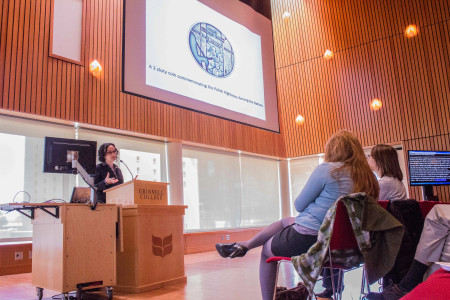
Photo by Rae Kuhlman.





